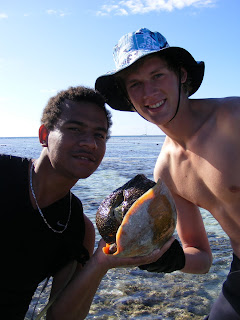


I was able to join 9 teachers and parents and 34 marine students on a marine camp at NorthWest Island. We left on a Monday morning at 4 am on a bus and drove for 4 hours then got off the bus and loaded a barge with all of our supplies for the week. The barge was about an 8 hour trip and we got to the island in just enough time to unload the barge and set up camp. Once camp was set up everyone was pretty tired and we just went to bed. Looking forward to the next several days of exploring an island and learning about all the marine life in the Great Barrier Reef. On the following Sunday at 8 pm we loaded up the barge and then made our way back to school and arrived a bit dirty and smelly but full of stories and smiles about the adventures we all had.















































